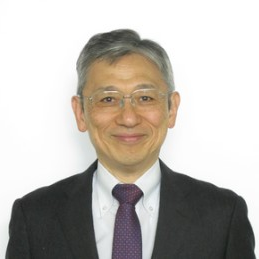Growth and Evaluation of Multicrystalline Silicon
A special issue of Crystals (ISSN 2073-4352).
Deadline for manuscript submissions: closed (15 July 2018) | Viewed by 15035
Special Issue Editors
Interests: growth of silicon ingot; crystal growth mechanism; defect formation; characterization of defects; evaluation of silicon ingot and wafer
Special Issues, Collections and Topics in MDPI journals
Interests: Crystal Growth Technology, Electronic Materials Processing, CFD and High Performance Computing
Interests: fluid dynamics; quantum mechanics; molecular dinamics; Monte Carlo simulation; solution growth
Special Issues, Collections and Topics in MDPI journals
Special Issue Information
Dear Colleagues,
Multicrystalline silicon (mc-Si) is widely used for substrates of solar cells. It is well understood that there is an advantage in the production cost in a mc-Si ingot in comparison to a single crystal Si, although the quality of mc-Si ingot should be improved further.
To realize a high energy conversion efficiency of mc-Si solar cells, the development of crystal growth technology is required. Furthermore, the fundamental understanding of crystal growth mechanism of mc-Si, mechanism of defects formation, and evaluation of mc-Si wafers are crucial.
We invite investigators to submit papers which discuss the development of high quality multicrystalline Si for solar cells, including bulk ingots and thin films.
The potential topics include:
- Crystal growth of mc-Si ingot
- Crystal growth of mc-Si thin films
- Crystal growth mechanisms of mc-Si
- Defects formation and their property in mc-Si
- Evaluation of mc-Si wafers
- Property of solar cells based on mc-Si
- Crystal growth of new materials based on Si
Prof. Dr. Kozo Fujiwara
Prof. Dr. Chung-wen Lan
Prof. Dr. Koichi Kakimoto
Guest Editor
Manuscript Submission Information
Manuscripts should be submitted online at www.mdpi.com by registering and logging in to this website. Once you are registered, click here to go to the submission form. Manuscripts can be submitted until the deadline. All submissions that pass pre-check are peer-reviewed. Accepted papers will be published continuously in the journal (as soon as accepted) and will be listed together on the special issue website. Research articles, review articles as well as short communications are invited. For planned papers, a title and short abstract (about 100 words) can be sent to the Editorial Office for announcement on this website.
Submitted manuscripts should not have been published previously, nor be under consideration for publication elsewhere (except conference proceedings papers). All manuscripts are thoroughly refereed through a single-blind peer-review process. A guide for authors and other relevant information for submission of manuscripts is available on the Instructions for Authors page. Crystals is an international peer-reviewed open access monthly journal published by MDPI.
Please visit the Instructions for Authors page before submitting a manuscript. The Article Processing Charge (APC) for publication in this open access journal is 2600 CHF (Swiss Francs). Submitted papers should be well formatted and use good English. Authors may use MDPI's English editing service prior to publication or during author revisions.
Keywords
- Crystal growth
- Crystal/melt interface
- Bulk ingot
- Thin films
- Dislocation, grain boundary, twin boundary, impurity
- Nucleation, grain orientation
- Computations
- Minority carrier lifetime
Related Special Issue
- Growth and Evaluation of Crystalline Silicon (Volume II) in Crystals (7 articles)







